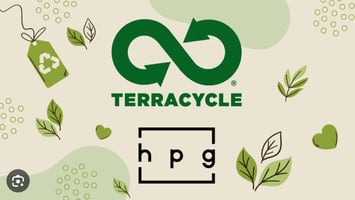Being sustainable and eco-friendly in the promotional products industry has increased over the past...
Gemline Tracks Carbon Emissions One Product at a Time
Gemline is taking a major step in their fight against reducing their carbon footprint. Earlier this year, the Massachusetts-based supplier introduced product-level carbon footprint data for over 180 products on their website as part of their continued sustainability efforts. What does this mean for Gemline and how is it measured, anyway? Here’s what we know about Gemline’s carbon footprint tracking.
How Does This Work and Why?
Gemline has been taking strides towards becoming a more sustainable company, from using recycled materials in their product line to installing solar panels at their headquarters. Over the past year, the company has been working with global leaders in impact measurement technology to calculate greenhouse gas emissions (GHG) for a variety of items in their lineup. Basically, Gemline is tracking the “cradle-to-gate” emissions of each product - from the raw materials stage to distribution to Gemline. Why track carbon emissions at the item level? For starters, they want to protect the planet and find ways to reduce their carbon footprint.
“We need to measure it. We need to understand what it is because it’s a big bucket,” said Tim Behling, Vice President of Supply Chain and Sustainability. “Having a better understanding of where that footprint comes from is the first step to managing that climate impact.”
Gemline is also committed to a more transparent approach to sustainability, letting their customers in on their efforts as part of their betterway initiative. Their consumers are becoming more eco-conscious when shopping for products and are interested in lowering their carbon footprint. Offering more eco-conscious products means Gemline can cater to the growing demands and get a competitive edge.
How is it Calculated?
The emission tracking, measured in kilograms of CO2e, is promptly on display on the product page. The number is calculated and based on many factors including the bill of materials, the composition of every material, the weight, and factory location and shipping information. These factors are calculated to give us the number that’s displayed. For example, the Alba Sling Bag has a footprint of 0.58kg of CO2e, while the Parkview Tote Cooler has a footprint of 1.58kg of CO2e. If you need help visualizing the number in the real world, one kilogram of CO2e equates to charging an average smartphone 122 times versus five kilograms can charge the same phone 608 times.
Which Products Are Tracked?
Right now, they are currently tracking over 180 products, predominately bags and coolers, with plans to add over 100 more down the road. These items span across numerous categories, materials, popularity, and price. Browse their carbon footprint tracked items and learn how Gemline is reducing their carbon footprint. To learn more about Gemline’s Carbon Footprint Tracking, click here.


